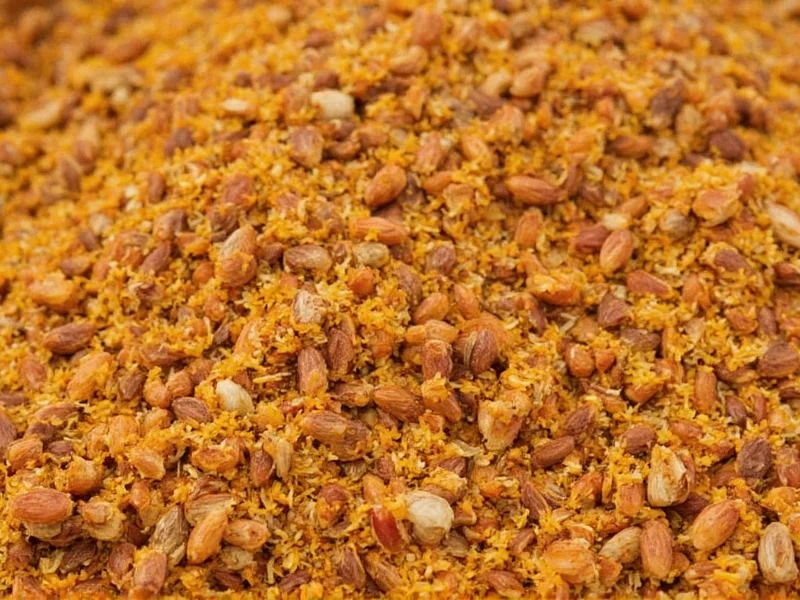Old Bay Seasoning, the iconic spice blend synonymous with Maryland seafood, has a carefully balanced formula that creates its distinctive flavor profile. While the exact proportions remain a closely guarded secret, the complete ingredient list includes celery salt, spices (including paprika, black pepper, cayenne pepper, cinnamon, ginger, allspice, nutmeg, cardamom), salt, and extractives of red pepper.
The Complete Old Bay Seasoning Ingredient List
According to the official McCormick packaging, Old Bay Seasoning contains:
| Ingredient | Approximate Percentage | Flavor Contribution |
|---|---|---|
| Celery Salt | ~50% | Savory, herbal base note |
| Paprika | ~15-20% | Earthy sweetness, color |
| Black Pepper | ~8-10% | Sharp heat, complexity |
| Cayenne Pepper | ~5-7% | Bright heat |
| Spice Blend | ~15-20% | Cinnamon, ginger, allspice, nutmeg, cardamom |
Understanding Old Bay's Flavor Profile
What makes Old Bay Seasoning unique is how these ingredients work together. The celery salt provides the foundational savory note that makes it perfect for seafood. Paprika contributes earthy sweetness without overwhelming heat, while the black and cayenne peppers add just enough warmth to enhance rather than dominate.
The secret spice blend—reportedly containing cinnamon, ginger, allspice, nutmeg, and cardamom—creates Old Bay's distinctive complexity. These warm baking spices might seem unusual in a seafood seasoning, but they provide subtle background notes that round out the flavor profile without being immediately identifiable.
History Behind the Iconic Seasoning
Old Bay Seasoning was created in 1939 by German immigrant Gustav Brunn, who fled Nazi Germany and settled in Baltimore. Originally called "Delicious Brand Shrimp and Crab Seasoning," it was renamed Old Bay after the Old Bay Line, a passenger ship line that operated along the Chesapeake Bay.
The name "Old Bay" refers to the historical designation for the Chesapeake Bay region, not to the seasoning being old or aged. Despite its regional origins, Old Bay has become a nationally recognized spice blend, particularly beloved for seafood but increasingly used in diverse culinary applications.
Common Culinary Uses for Old Bay Seasoning
While traditionally associated with crab boils and shrimp, Old Bay Seasoning has expanded far beyond its seafood origins. Home cooks and professional chefs alike use it for:
- Seafood boils and steamed shellfish
- Rub for grilled or roasted chicken
- Seasoning for french fries and roasted potatoes
- Flavor enhancer in deviled eggs
- Ingredient in remoulade and cocktail sauces
- Seasoning for corn on the cob
- Additive to Bloody Mary cocktails
Creating Your Own Homemade Old Bay Substitute
If you're looking for what's in Old Bay seasoning to recreate it at home, this blend captures the essential flavor profile. While it won't match the exact commercial version, it provides a remarkably close approximation:
- Combine 4 tablespoons celery salt
- Add 1½ tablespoons paprika
- Mix in 1 tablespoon black pepper
- Add 2 teaspoons cayenne pepper (adjust to taste)
- Incorporate 1 teaspoon each of dry mustard, ground allspice, and ground nutmeg
- Add ½ teaspoon each of ground cinnamon, cardamom, and ginger
- Mix thoroughly and store in an airtight container
This homemade Old Bay seasoning alternative works well for most applications, though the commercial version's precise ratios and proprietary processing create a more consistent flavor.
Storage and Shelf Life Considerations
Like all spice blends, Old Bay Seasoning maintains its best flavor when properly stored. Keep your Old Bay in an airtight container away from heat and direct sunlight. Properly stored, it will retain optimal flavor for 1-2 years, though it remains safe to use indefinitely.
You can tell if your Old Bay has lost potency if the color has faded significantly or if the aroma has diminished. While expired seasoning won't make you sick, it won't provide the vibrant flavor profile that makes Old Bay so distinctive in seafood boils and other applications.
Understanding Regional Variations
What's in Old Bay seasoning might vary slightly depending on where you purchase it. The standard version sold nationally contains the ingredients listed above, but regional variations exist:
- Maryland Style: Slightly more celery salt and less cayenne
- Cajun Style: Increased cayenne and addition of garlic powder
- Lemon & Pepper: Reduced spice level with citrus notes
- Low Sodium: Reduced salt content while maintaining spice profile
When searching for what spices are in Old Bay seasoning, be aware that these variations alter the traditional formula while maintaining the recognizable flavor profile.
Frequently Asked Questions
Does Old Bay Seasoning contain MSG?
No, Old Bay Seasoning does not contain monosodium glutamate (MSG). The complete ingredient list includes celery salt, spices, salt, and extractives of red pepper, with no added MSG.
Is Old Bay Seasoning gluten-free?
Yes, traditional Old Bay Seasoning is gluten-free. The ingredients consist of spices, salt, and celery salt with no wheat-based additives. However, always check the specific product label as formulations can change.
What gives Old Bay Seasoning its distinctive flavor?
The distinctive flavor comes from the high proportion of celery salt combined with paprika, black pepper, and cayenne, plus the unique blend of warm baking spices (cinnamon, ginger, allspice, nutmeg, and cardamom) that create complexity without being immediately identifiable.
How spicy is Old Bay Seasoning?
Old Bay Seasoning has mild to moderate heat. The cayenne pepper provides warmth rather than intense spiciness, making it approachable for most palates. The heat level is significantly milder than many hot sauces or cayenne-heavy spice blends.
Can I make Old Bay Seasoning without celery salt?
While possible, substituting celery salt significantly alters the authentic Old Bay flavor profile. If necessary, use 2 parts table salt to 1 part celery seed, but the result won't capture the distinctive celery note that defines traditional Old Bay Seasoning.











 浙公网安备
33010002000092号
浙公网安备
33010002000092号 浙B2-20120091-4
浙B2-20120091-4